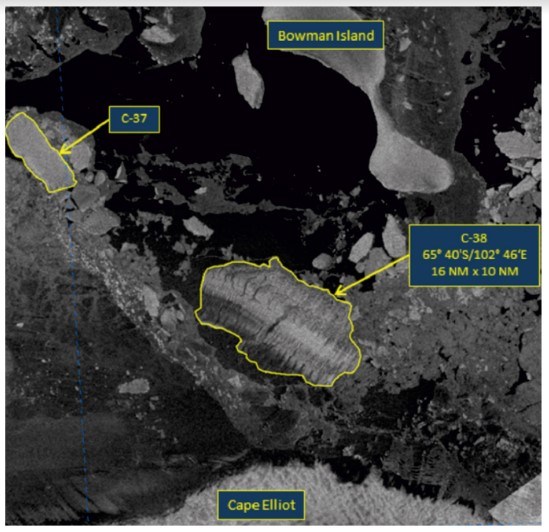Spring 2022 Newsletter
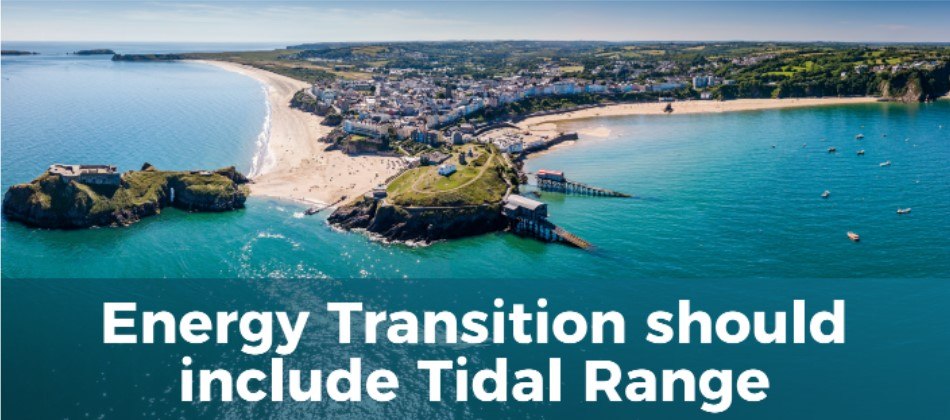
Welcome to this month’s newsletter with the focus on offshore renewable energy. The ongoing Climate Emergency and progress towards Net Zero Carbon by 2050 have been driving the recent acceleration in renewable energy production, particularly offshore. Now coupled with the crisis in Eastern Europe affecting energy security to Europe, there are demands for more UK-based dependable baseload energy generation. While the focus has been on offshore wind and solar panels, periods of sustained lack of wind or prolonged overcast episodes have seriously dented renewable energy production and the profits of the operating companies. There are calls for more nuclear power generation, but this carries with it the consequences of yet more radioactive waste to be dealt with coupled with security concerns. The Oil and Gas sector is rightly addressing the role it can play through Carbon Capture and Storage, but this does not reduce carbon production but only hides a proportion of what is produced. Again, security and prospects of leakage are issues still to be fully resolved.
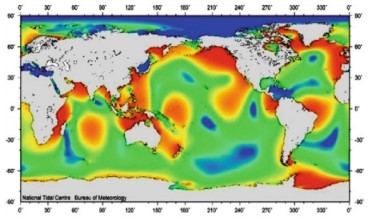
Yet the UK is blessed with some of the greatest tidal ranges in the world, particularly the Severn Estuary and the North Wales coast. There are two tidal range schemes being mooted in North Wales, the largest being a 2.5 GW project from Great Orme to east of Prestatyn. This would, in addition to generating some 5.5 TWh of power annually, provide essential coastal flood protection along the North Wales coast.
RIL is the principal marine geoscience consultant for the North Wales Tidal Energy scheme, having had extensive experience of marine hydrographic and geophysical surveys in the area as well as internationally.
What really happens on the seafloor in 3D?
Our oceans and seas are dynamic living systems that are essential for life on our Blue Planet. There is now a major push to install more, and larger, renewable energy infrastructure in these environments. Inter-connector cables and anchors are essential to the long-term operation of such schemes. Yet how well are the processes known at the seafloor, especially in 3D? Given that two major renewable energy developers have had to commit an unexpected €400 million to replace seafloor cables, it suggests not well enough.
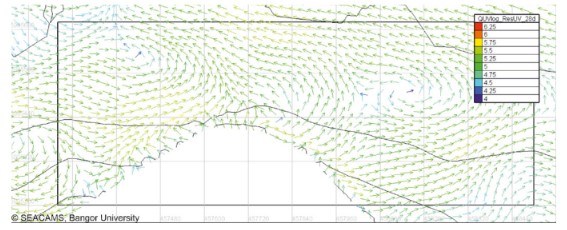
Seabed sediment mobility models are commonly based on a uniform substrate with mobile sediment only being moved through lateral flow. Large scale circulations occur in open water with decreasing-sized gyres with proximity to the shore. Similarly, there is a growing body of hydrographic and seismic evidence to suggest
that there can be a significant oblique flow even orthogonal to the main flow direction that is capable of sculpting bedforms with different symmetries and amplitudes depending upon the very local seabed topography. Similarly, there is evidence that near-seabed localised current can flow at an acute angle to that of the driving current and can generate counter-spiralling flows that flow in the same lateral direction either side of a depositional ridge. Locally, this can produce parallel troughs scoured in soft sediments divided by ridges of reworked deposited material between them. This is further complicated where the seafloor has a pronounced topography that is influenced by seafloor-proximal currents and differing substrate geology, e.g., erodible sand vs more resistant clay. The level of the seabed of southern North Sea, for example, is deflating over time, being now many metres deeper than it was perhaps a millennium ago.
Such localised scour can play havoc with both fixed pile seafloor collars, reducing the support for the wind turbine column, and both expose and smother seafloor cables.
RIL has many years of experience analysing hydrographic and seismic data along with multi-beam echo sounder and side-scan sonar mosaics for offshore renewable energy projects. For more insights into seabed sediment mobility and associated physical processes contact us on +44 (0)1352 756196 to find out how we can help you with your marine project.
Determining technical objectives for OWF Ground Investigations
In marine hydrographic and geophysical surveys acquired more than a decade ago, the emphasis was on mobilisation of a survey vessel and acquisition of very basic data, without any sophisticated design. This was typically followed by rudimentary intrusive testing at locations based on statistical spatial sampling. The net outcome was disconnected datasets that were difficult to reconcile and integrate. The emphasis was on data acquisition first, interpret what you can afterwards.
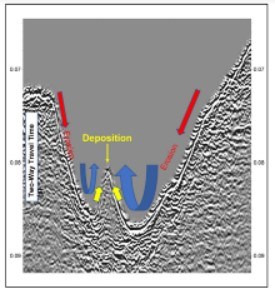
In the latest investigations, technical specifications and survey design should be much more carefully and skillfully prepared. Each component of a ground investigation should be designed to address a particular range of technical questions. For a first pass investigation, this is often to discover what is where, of what it is made, and how variable in properties are the materials present. For subsequent phases of ground investigation, each survey line, Cone Penetrometer Test, borehole, etc., should be to address a specific technical question and/or reduce existing uncertainty. Furthermore, intrusive testing locations should be co-located on good-quality seismic profiles to optimise integration between datasets and enhance the confidence in the interpretation.
Yet even now, surveys are being inadequately specified, incorrectly equipped, with poor data quality through lack of adequate supervision by suitably qualified Client Representatives. Intrusive test sites are being located too far from the nearest seismic profiles, all of which makes robust, unequivocal, cross correlation between geotechnical and geophysical datasets sub-optimal at best.
Reynolds International Ltd are the leading geophysical survey design and 3D geological Ground Model developers in the offshore renewable sector. We can help you to ensure that your Ground Investigation can result in a high-quality robust 3D Ground Model on which you can depend. Contact us for an initial free consultation.
Oceanology International – trends and selected highlights
Oceanology International took place at Excel, London, on 15th-17th March 2022. The event brought together over 430 global suppliers and solution providers of ocean tech components, equipment, data analytics and communications, consultancy, contracting, survey, engineering, research, and more besides. Several exhibitors were able to display their equipment on the water from several boats moored alongside in Royal Victoria Dock. In parallel with the trade exhibition was a series of technical presentations over the three days. There was plenty of opportunity to meet colleagues old and new both at the stands and in designated meeting areas set aside to facilitate discussions.
Having been involved in marine investigations for a very long time, and been witness to the development of technology, sensors, deployment platforms, and modes of analysis over this time, this latest show had a real WOW factor to it. The range of sophisticated technology on display was truly impressive to see first-hand. The spectrum of unmanned or lean-crewed vessels was huge. These varied from drone- deployable autonomous underwater gliders to a fleet of submersibles deployed from a mother ship, through to a genuinely autonomous flotilla of vessels working in harmony to maximise ground coverage, optimise resolution, and minimise carbon footprint, and human intervention. The ability to gather data
is now phenomenal.
While there is a current emphasis on data acquisition, with consequential mammoth data volumes being collected, an increasing challenge is how these data volumes can be managed efficiently and securely in an increasingly insecure world.
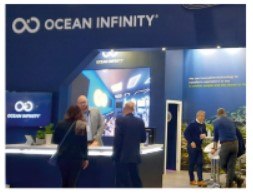
Another clear challenge is translating data to knowledge (knowing what is where, how big, rates of changes, etc.), there is a glaring global shortage of expertise to be able to translate the knowledge from the acquired data into an understanding of processes at all relevant scales within the systems being investigated.
This is where RIL’s long-established expertise comes into play. Fully understanding the data journey from start through to end, we have many years’ experience of analysing large complex multi-type data volumes to produce robust 3D geological models and derived products that are proven to save developers money.
Sir Ernest Shackleton’s lost ship HMS Endurance found
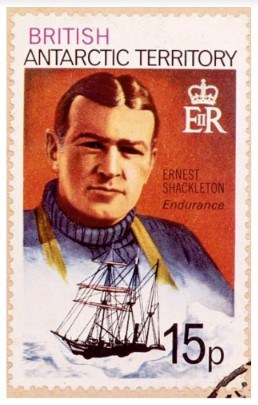
I was brought up reading the graphic accounts of Sir Ernest Shackleton’s expeditions and had the privilege of spending months sailing around the Antarctic Peninsula, James Ross Island, and the NW Weddell Sea. I was even able to retrace part of Shackleton’s epic journey from when his ship, HMS Endurance, was crushed by sea ice and his team made the perilous journey to Elephant Island. I also followed the route Shackleton and two crew took in the James Caird to the southern coast of South Georgia where they crossed the mountains to the Norwegian whaling community of Stromness. Sir Ernest died on 5th January and was buried at the former whaling station at Grytviken on South Georgia, where I have raised a few drams of whisky in his honour.
The almost intact wreck of HMS Endurance was found a hundred years to the day after Shackleton’s funeral on 5th March 1922 just over 4 nautical miles roughly south of Frank Worsley’s record of the sinking of the ship (68°39’30” S, 52°26’30” W) at a depth of 3,008 m. A search expedition had been raised by the Falklands Maritime Heritage Trust and the National Geographic magazine.
The search vessel, South African icebreaker Agulhas II, was equipped with the latest technology including a remotely operated SAAB Sabertooth Unmanned Underwater Vessel (UUV). The wreck was found with only three days left before the end of the Antarctic field season, with sea ice closing in and temperatures plummeting. However, the sea ice conditions had been extremely favourable as the last month of the expedition had seen the lowest extent of Antarctic sea ice ever recorded during the satellite era. The Sabertooth UUV was tethered to the research ship by fibre-optic cable and was fitted with long-range side- scan sonar, lights, and tiltable camera by which graphic pictures of the wreck of Endurance were captured.
The success of this mission highlights what can be achieved using the appropriate technology deployed well by a highly skilled team. The future of marine investigations is extremely exciting with all the new technology that is becoming more routinely available. What else lies yet undiscovered on our hidden seafloors?
The hunt for more members of the ‘A-Team’

The RIL Marine Geophysics team is independently rated by clients as being ‘top notch’, and ‘Best in Class’, and ‘indisputable leaders in the offshore renewable sector’, the ‘A-Team’! As we are looking to continue to expand, we are on the lookout for other amazing talented geoscientists, preferably PhD-qualified in a relevant subject, to join our team. If you think you have what it takes, have a sense of adventure, and an applied research focus but are not afraid of hard work and tackling intellectual challenges, then send us your CV with a covering letter/email in which you list three bullet points briefly listing your key attributes that satisfy the above criteria and that will make us sit up and take notice of your application.
Thermal conductivity of shallow soils affecting power cable installations
Submarine power cables transport electricity generated by installations such as offshore windfarms. Designing the cable to optimise efficiency and longevity are key for developers. Considerations include the maximum rating; cable thickness; and choice of cable insulation to name a few. While savings can be made through minimising the raw material such as copper required for the cable, care must be taken to minimise transmission losses which can occur by overheating of the cable. To minimise this, understanding how heat is conducted by the materials surrounding the cable is key. Thermal conductivity is a measure of how well heat is conducted through a material. If the cable is draped on the seafloor, heat is dissipated by the water column but if it is buried or covered, the thermal properties of the overlying material will determine the extent to which heat generated by the power cable is lost.
Geo-Factoid – Atmospheric Rivers – causes and consequences
Atmospheric rivers’ are long, narrow, river-like ribbons in the atmosphere that transport most of the water vapour outside of the tropics and move with the weather. They carry roughly the same amount of water as the average flow at the mouth of the Mississippi River. They can result in intense episodes of precipitation that can generate huge floods. In March 2022, such an atmospheric river dumped warm snow over in East Antarctic accompanied by an unprecedented temperature anomaly some 40°C warmer than seasonal warms. This led to the collapse of the small but significant Conger Ice Shelf in Eastern Antarctica. This is setting off alarm bells for yet faster rises in average global sea level.
